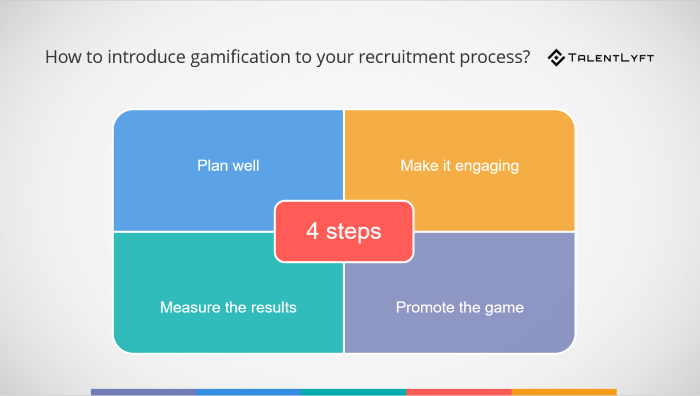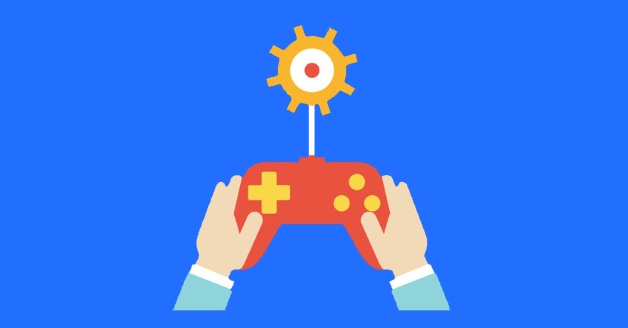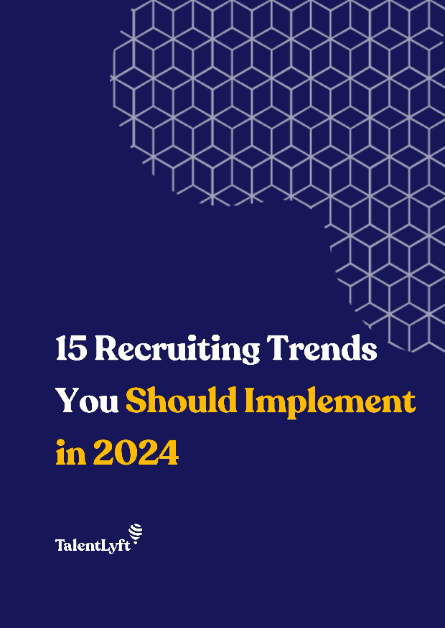![https://adoptostaging.blob.core.windows.net/article/mlMlZLQVcEm0xIUINJ4b2g.png?8445]()
Gamification: A new trend in recruitment
Gamification is a huge trend in everything related to education and training. In the military, for example, the concept of gamification was introduced long before the civil world was aware of it. Various computer games of military logistics are being designed to train the recruits.
This concept uses the theory, mechanics, and designs of a game to engage people and motivate them to achieve goals in the digital world.
Can employers and recruiters learn from the examples in military and education? Can we adopt specific gamification strategies to find and hire the ideal job candidates and train them to perform better? Of course, we can!
Why should you use gamification in recruitment?
We’ll be honest about this: it takes a lot of effort to “gamify” the process of recruitment. The process involves developing a strategy and hiring a team that will make it happen. So why should you even bother altering your traditional methods of recruitment if you believe you’re doing just fine? Why is gamification one of the new recruiting trends you should implement in 2021?
Here are the top 4 reasons for using gamification in recruitment:

1. Testing specific skills
What are you looking for in the perfect employee? Is it creativity? A job interview can give you hints of the applicant’s creativity, but it won’t give you practical examples. A game will!
If, for example, you need perfect time-management skills, you can develop a game that tests them. The game will give the applicant a task to solve while attacking them with all sorts of distractions. If you’re looking for a candidate with exquisite memory and problem-solving skills, you can use a game like Lumosity during the hiring process.
The point is: gamification allows you to conduct a focused and relevant recruitment process.
2. Saving time
Let’s say you own a restaurant and you’re hiring a new chef. The traditional way of testing their skills would be a trial period in the kitchen. That’s still necessary. It’s a process that takes hours or even days. A game, however, will save you a lot of time because you won’t have to test all applicants in the kitchen.
For example, Domino’s launched a game named “Create Your Own Pizza Legend.” It’s available for everyone. The customers have a chance to create their digital pizza and they get all the fame for it. Can you imagine using this type of game in the recruitment process? Instead of inviting all applicants for a test, you can simply test their activity by allowing them to play with virtual ingredients.
This type of gamification is applicable to all industries beyond restaurants. You’ll get the opportunity to test multiple applicants, so you’ll choose the absolute best ones for the actual interviews.
3. Making the recruitment process less stressful
For most applicants, it will be much easier to handle a game on screen than to answer interview questions. The best ones will still get to the interview, but the game will introduce them to the organization’s spirit before that point.
Since games usually involve fun, the applicants will understand that this process is not as scary as they thought. They will take it seriously, but they will be more relaxed during the recruitment stages.
4. Keeping up with your competitors
Some of the most successful companies, especially in tech industries, have already implemented gamification in recruitment. This is a huge trend that the modern workforce is attracted to.
If you want to engage the best job applicants, you better show them that you represent the best organization. This investment proves that you keep pace with technology trends and you’re willing to invest in your company’s growth.
How to introduce gamification to your recruitment process?
So how do you do It? How do you introduce gamification in recruitment?
Here are 4 steps you need to take in order to introduce gamification to your recruitment process:

Step #1: Plan well
Before you introduce a game in the recruitment process, you clearly need a plan. What kind of game will this be? How is it going to help you test relevant skills and knowledge? How are you going to measure the results? How will you make it happen?
Mena Mussot, HR manager from Superior Papers, explains:
“Any new technology involves some level of risk. You have to plan this process extremely well and analyze the way it’s being introduced. Set precise goals, so you’ll know what you want to achieve with the gamification. Then, figure out the practical steps that will take you towards those goals.”
Here are a few examples of goals you’d want to achieve:
An easier and less time-consuming recruitment process.
Measuring job-related skills.
A job advertisement best practices that get more shares and likes on social media.
Attracting influencers and the most talented workers in your niche to apply for work in your company.
Creating some buzz and brand awareness.
You can achieve all these goals if you properly plan and execute the gamification process.
Step #2: Make it as engaging as possible
The point is not to confuse the candidate. The point is to engage them in a fun game that doesn’t make them feel like they are being monitored. The game should be simple, entertaining, and highly interactive. So don’t try to turn it into some kind of test that asks the applicant to choose from multiple answers to questions. That’s not a game.
More than seven years ago Marriott launched a Facebook game with the intention to recruit Millennials. The players were taking on the role of a hospitality manager. The hiring managers had a goal to fill 50K positions at Marriott chains around the world. The best players got a chance to get an actual job. Initially, this game received a good response - it attracted more than 25K players within a single week. That’s the kind of engagement we’re talking about.
Step #3: Measure the results
Games are good because they instantly give you results. You must have some kind of reward system that informs the candidates how they perform and gives you enough data to measure their effectiveness.
The My Marriott Hotel game we mentioned above had a good system of points. When the players performed well, they got points. When they were guilty of poor customer service, they lost some points. A simple system that measures results will make the elimination process much more successful.
Step #4: Promote the game
This is not a simple job ad. It’s a game that can be available to a much larger audience. Of course, you may choose to introduce the game only to applicants who apply through the traditional ad, but that won’t get you enough exposure. Whenever a company introduces gamification in the process of recruitment, it gains a chance to prove how it’s better than its competitors.
If you promote this game across all channels and best places to promote your recruitment content, you’ll attract more applicants. You’ll boost the visibility of your brand and you’ll get top candidates interested in it. Why waste that chance? Engage your marketing team to promote the game and you’ll get access to a larger pool of talent.
Conclusion
Gamification does take a lot of work. You will need to develop a clear plan and you’ll probably need the help of tech experts to make it happen. At the end, the results are well worth the effort.
About the author
Silvia Woolard is a chief writer at Writix and a novice entrepreneur from Phoenix, AZ. She mostly writes and works in a field of marketing and popular psychology. You can follow Silvia in her Twitter!


















